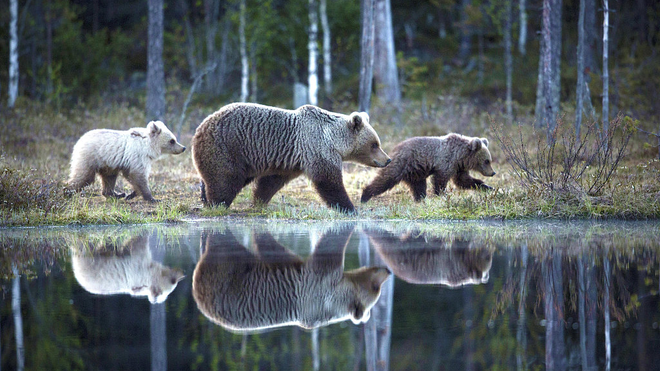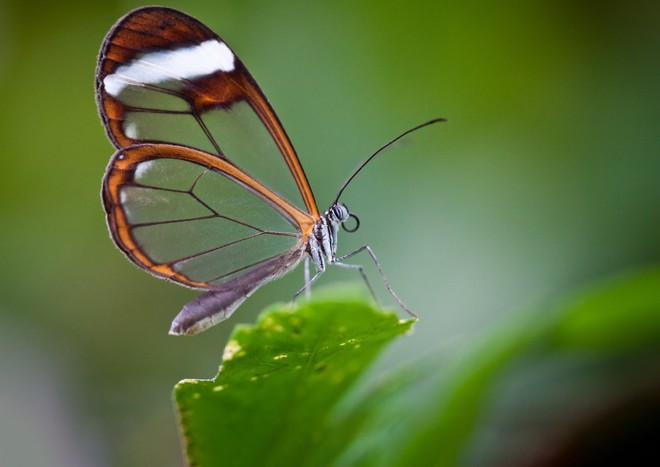We do not have a definitive answer in 2021, to a problem that has existed since 1833. In the dying days of 2020, Current Biology magazine suddenly became a battleground for scientists split into two factions when they discuss the same issue: Will climate change make animals a color of fur or skin. lighter or darker?
A team of scientists led by Li Tian from the Chinese University of Geosciences and Michael Benton from the University of Bristol said the answer is darker, as animals are faced with a brighter sun and more ultraviolet rays.
Opposing them, Kaspar Delhey, an ornithologist living in Australia and working remotely for the Max Planck Institute in Germany says the answer must be brighter. The reason he gives is that because climate change causes the Earth’s temperature to increase, animals must equip themselves with a shinier coat or skin to reflect sunlight and avoid absorbing a extra heat.
After all, who is right in this century-old debate?
The debate resumed after 300 years
In fact, debates like those of Li Tian and Delhey have germinated since the 19th century, after several biologists of that time defined numerous “rules” describing the effects of Earth’s temperature on the pattern of ecosystem evolution. and animals.
A rule of thumb, for example, is that animals in hot climates need extra parts such as beaks and larger ears to help them dissipate heat. Some other 19th-century scientists said that of any group of animals, the largest species usually inhabit the South and North Poles. For example, polar bears have much larger bodies than tropical brown bears – because larger bodies warm them up.
Among the living sciences in the 1800s appeared a German biologist named Constantin Gloger. Gloger established a rule with his own name that animals in warmer regions tend to appear darker, while animals in cooler regions will always have lighter skin and feathers.
In mammals, darker skin and fur are believed to have protective effects against harmful ultraviolet rays, which are conditions in sunny equatorial regions. In birds, specific melanin pigments in the dark fur appear to help them resist bacterial invasion, and these bacteria also survive more in the hot, humid tropics.
As of July 2020, two scientists Li Tian from the Chinese University of Geosciences and Michael Benton from the University of Bristol reiterated Gloger’s rule in a study in the journal Current Biology. They suggest that this rule can be used to predict the impact of climate change on the bodily tendencies of animals.
Among a series of engraved lines, Li Tian and Benton again insist that as the Earth warms up, most animals will develop darker skin and feathers. But it prompted a host of other scientists, including Kaspar Delhey from the Max Planck Institute of Ornithology in Germany, to publish their protests.
It turns out that the story of the appearance of the animal is not so simple for a scientist living in the 18th century to be summed up in a simple rule like that of Gloger. Whether animals will have lighter or darker hair in the future is actually more complicated than you might imagine.
Will climate change make animals appear darker or brighter?
Over the past few years, Delhey has led a campaign to break the Gloger Rule and replace it with something more specific. He’s not afraid to voice his unwavering opinion that the Gloger Rule has caused a harmful misunderstanding but can be permanent if no one dares to break it.
It all started with a book written in 1833 by Constantin Gloger which was described by Delhey as “stupid and bad”. What Gloger says in the book focuses on two environmental parameters, humidity and temperature.
Increased humidity leads to lush plant growth, providing shade for animals to hide from predators. As a result, animals will tend to evolve with a darker appearance in damp places for camouflage.
It is true that in many warm places, in cool, humid forests like Tasmania, we can find the darkest birds in the world, Delhey said.
But instead he argues that if you control humidity, Gloger’s rules are reversed – warming forces animals to be brighter. This is especially true for cold-blooded creatures, Delhey said.
Insects and reptiles depend on external heat sources, and in cold places their dark appearance helps absorb sunlight. In warmer climates, these restrictions are relaxed and they will need to be clearer. Delhey calls this the “theory of thermodynamics”.
These arguments of Delhey are sent back to Tian and Benton’s group and, in a scientific sense, both welcome criticism. However, in a response to Delhey’s team, Tian and Benton cite instances where their predictions of darker animals in warmer climates are correct.
The Finnish Tawny has a black or light gray coat color, with a gray color that helps camouflage in snow. But as Finnish snow cover declined, the density of the owl’s dark brown hairs increased from around 12% in the early 1960s to 40% in 2010.
Tian and Benton recognize that predictions of climate change in animal hair and skin will be difficult to be exact as temperature and humidity parameters change. For example, current climate models predict that the Amazon rainforest will be hotter and drier.
This makes Tian, Benton, and Delhey agree that the animals will have lighter fur and skin.
But in the deep forests of Siberia where the temperature could get hotter and the humidity ever higher, the two groups of scientists failed to reach a consensus. Unlike physics or chemistry, Benton says the laws of biology are “not absolute. It’s not like gravity.”
The answer is still not clear
Even when projections of general animal trends are correct, it is still difficult to predict how the appearance of individual species will change in response to climate change. Lauren Buckley, a biologist at the University of Washington, Seattle, has studied the colors of butterflies in high altitude areas.
Butterflies absorb heat when sunbathing, but only a small spot on their underside that actually absorbs heat.
“Without knowing it, you could accidentally quantify all kinds of weird colors on the tips of their wings and the problem won’t be resolved,” Buckley said. “We need to think about a big picture of how organisms interact with their habitats.”
Changes in color will likely also depend on the animal’s temperature-regulating system – with cold-blooded organisms, they often evolve to appear brighter. And among birds and mammals, the results can be mixed.
To improve predictions, Buckley suggests biologists use museum specimens, such as animal mummies, to extend the duration of their follow-up. However, this can be confronted with deterioration of the color over time of the sample.
For her part, Tian plans to conduct experiments with heated containers of insects and molluscs. She will examine how their skin and fur color change from generation to generation, under different conditions of temperature and humidity.
This means that the final answer to this 300-year-plus debate is yet to come. We do not have a definitive answer in 2021, to a problem that has existed since 1833.
And the problem can be even more serious when more animals are expected to become extinct or become extinct as a result of climate change. If they can no longer exist, there is no point in predicting whether they will be lighter or darker.





